Highlights from a record-breaking year of conservation
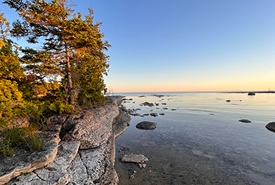
Baptist Harbour, ON (Photo by Esme Batten/NCC staff)
The Nature Conservancy of Canada (NCC) is celebrating another year of growth in 2023. Together with the supporters and partners who make it possible, we continued to make a difference for nature.
This year NCC deepened relationships with communities across the country and built on the connection between people and nature. We’re committed to our goal of mobilizing Canadians and delivering permanent, large-scale conservation. Read on to see the impact we’ve made, with your support, across the country this year:
Vital habitat conserved in a vulnerable area
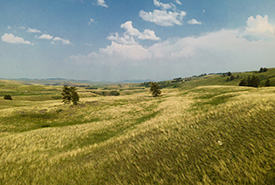
Bunchgrass Hills. (Photo by Fernando Lessa)
Rolling hills covered in grasses and wildflowers, Bunchgrass Hills is a stunning landscape – now protected for the future. This new conservation area, located south of Kamloops, British Columbia, is over 6,100 hectares of native grasslands, Douglas-fir woodlands and wetlands. The Bunchgrass Hills Conservation Area builds on connected habitat for many iconic species, including Lewis’s woodpecker and American badger.
Learn more about Bunchgrass Hills Conservation Area here >
Record-breaking collaboration
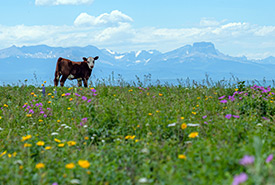
Cow on McIntyre Ranch (Photo by Leta Pezderic / NCC Staff)
McIntyre Ranch, the largest private grassland conservation project in Canadian history, features over 22,000 hectares of grasslands and wetlands near Lethbridge, Alberta. NCC has partnered with Ducks Unlimited Canada to conserve this rich ecosystem in partnership with its landowners. The fundraising campaign to complete this incredible project is still underway.
Learn more about McIntyre Ranch here >
Action for grasslands
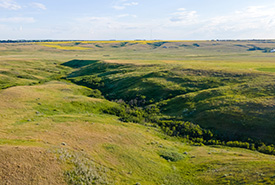
Cave Pasture, SK (Photo by Gabe Dipple)
Sharp-tailed grouse, the iconic provincial bird of Saskatchewan, is one of many species that find refuge at Cave Pasture, a new NCC conservation area. Located near Swift Current, Saskatchewan, Cave Pasture features close to 290 hectares of grasslands, wetlands and shoreline habitat. The Cave Pasture conservation project exemplifies NCC’s Prairie Grasslands Action Plan, a comprehensive strategy aiming to conserve more than 500,000 hectares by 2030.
Learn more about Cave Pasture here >
Looking ahead with Tomorrows Land
NCC is working with local Anishinaabe representatives and the Beddome family to jointly steward and monitor more than 300 hectares on the banks of the Assiniboine River, near Brandon, Manitoba. This area is important culturally, agriculturally and for conservation.
The land has been named Wabano Aki, following a naming ceremony that celebrated this new collaboration. The event included Elder Roddy McKay, Anishinaabe cultural support worker Ken Norquay, cattle farmer Gordon Beddome and NCC. The group is collectively known as the Stewards of Wabano Aki. In Anishinaabemowin, Wabano Aki translates to Tomorrows Land. This project demonstrates the whole-of-society approach necessary to address the dual crises of biodiversity loss and climate change.
Learn more about Wabano Aki here >
Earth Week celebration

Baptist Harbour, ON (Photo by Esme Batten/NCC staff)
NCC rang in Earth Week in April with the news of a new project on Ontario’s Saugeen Bruce Peninsula called Baptist Harbour. This project protects shoreline and inland alvar, an internationally significant habitat that supports many species of bird, plants, lichens and other rare and at-risk species. Conserving Baptist Harbour’s wetlands and forests also protects the fragile karst ecosystems in the area that filter water into Lake Huron.
Learn more about Baptist Harbour here >
Expanding a crucial corridor
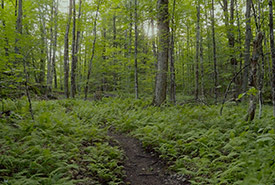
A rustic trail through one of the new projects in the Sutton Mountains, QC (Photo by La Halte Studio)
In partnership with Au Diable Vert, NCC expanded a vast ecological corridor that stretches from Mount Orford in Quebec’s Eastern Townships to Vermont. Three new properties add over 200 hectares to this natural area; important habitat for wide-ranging animals, such as black bear, bobcat and moose. This project made possible through collaboration, including funding from the government of Quebec, the government of Canada and generous private donors.
Learn more about this project on the Sutton Mountains here >
The power of one
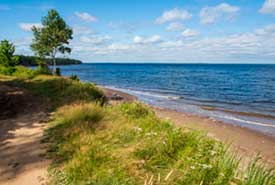
Gardiner Point, NB (Photo by Andrew Herygers/NCC staff)
The Gardiner Point Nature Reserve, on New Brunswick’s northeastern coast, is a testament to the impact an individual can make. Cheryl Coffin, a U.S. citizen, donated 21 hectares of coastal shoreline and forest to the American Friends of Canadian Nature, who then transferred it to NCC. Cheryl has fond childhood memories of the beautiful coastal landscape and a passion for nature. She was inspired to make a difference by conserving the land.
Learn more about Gardiner Point here >
Migratory bird habitat expanded
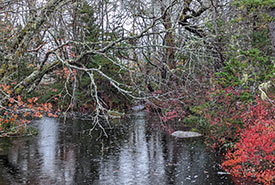
Haley Lake Nature Reserve, NS (Photo by Jaimee Morozoff/ NCC staff)
This year, NCC announced the securement of the Haley Lake Nature Reserve, conserving 600 hectares in Port L’Hebert on Nova Scotia’s south shore. This nature reserve includes Wabanaki (Acadian) forest and lake shoreline habitat. Both areas are important for migratory birds and rare lichen species. The protected area at Haley Lake expands NCC’s network of conserved and stewarded land in this region to over 1,600 hectares.
Learn more about Haley Lake here >
Twice the impact
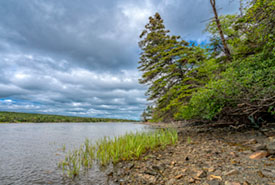
Salmonier Nature Reserve, NL (Photo by Dennis Minty)
The Salmonier Nature Reserve in southeastern Newfoundland has doubled in size this year, thanks to the support of generous supporters and partners. An hour from St. John’s, the nature reserve provides habitat for iconic species, such as woodland caribou, red fox, snowshoe hare, beaver and Canada lynx. The addition of more than 230 hectares of intact boreal forest, heathland and freshwater wetlands brings the total size of the conservation area to 410 hectares.
Learn more about Salmonier Nature Reserve here >
Future of important island secured
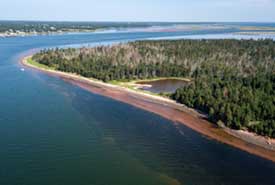
Kewsawe'k (Oulton's Island), Prince Edward Island (Photo by Stephen DesRoches)
NCC and the Epekwitnewaq Mi’kmaq announced that a fundraising campaign is nearly completed for the purchase of Kwesawe’k (Oulton’s Island). Kwesawe’k is a culturally and ecologically significant island on the northwestern shore of Prince Edward Island. In collaboration with the Epekwitnewaq Mi’kmaq and thanks to a unique agreement, the island will ultimately be transferred to the Epekwitk Assembly of Councils, who will continue to conserve and care for Kwesawe’k.
Learn more about Kwesawe’k here >
Across NCC, we are inspired by your continued support, which makes these successes possible. In 2024 and beyond, we will accelerate the pace of conservation across the country. Nature moves us and together we are moving with nature, building towards a thriving world.




